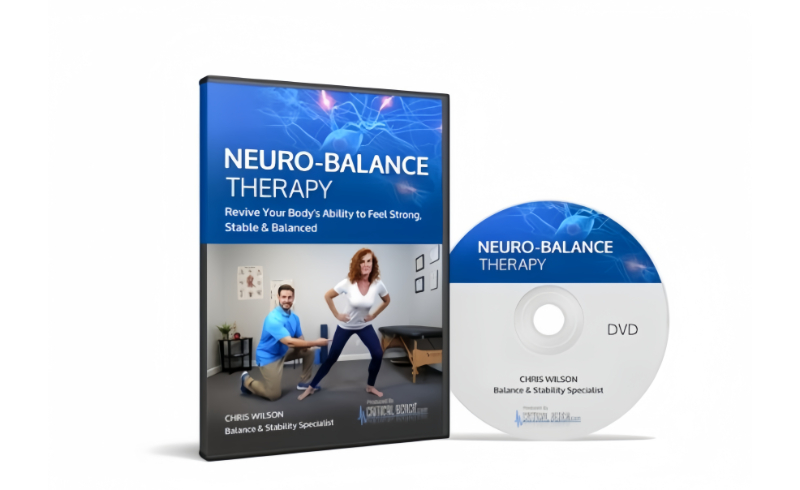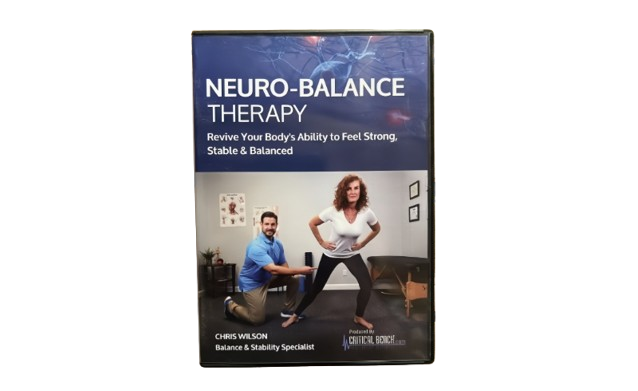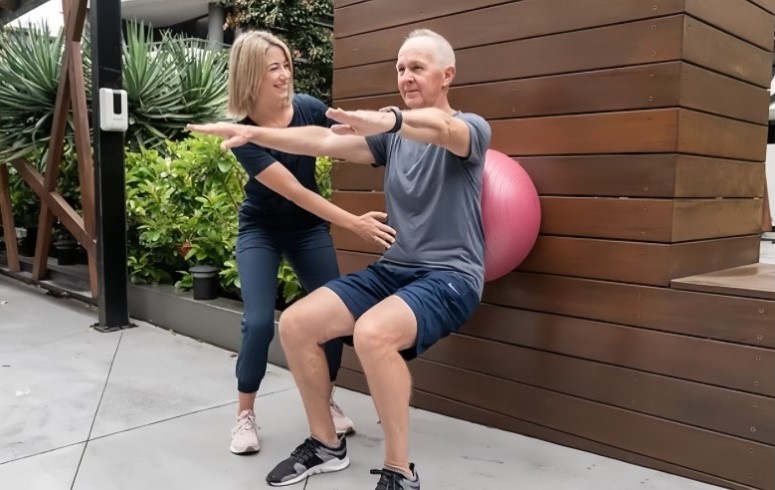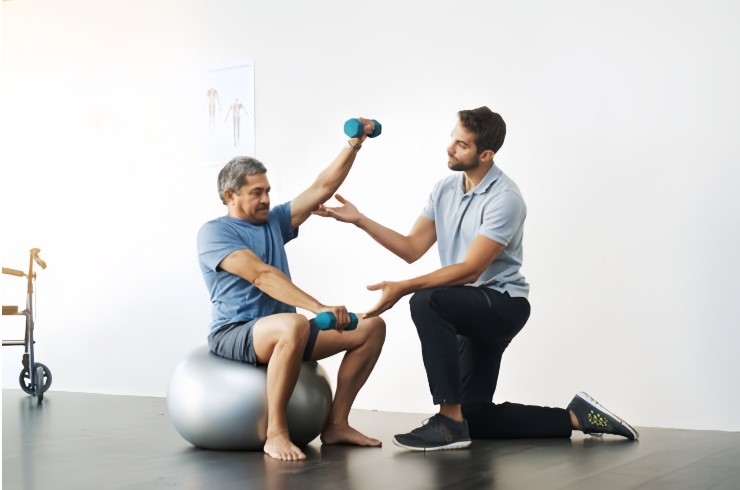Top ways to use Neuro-Balance Therapy for mental health.

1. Introduction
Neuro-Balance Therapy is a form of physical therapy that combines techniques such as balance exercises, the use of vibrating devices, and relaxation activities to stimulate the nervous system, helping improve balance, reduce the risk of falls, and enhance muscle strength. This method is commonly used for older adults, individuals with neurological issues, or for rehabilitation after injury.
The scientific basis of Neuro-Balance Therapy lies in its ability to interact with the nervous system through direct and indirect stimulation. These exercises help strengthen the connections between the brain and muscles, allowing the body to react more effectively to balance-related issues.

2. Effects of Neuro-Balance Therapy
Neuro-Balance Therapy brings about significant effects, particularly on the nervous and musculoskeletal systems, and offers numerous advantages that extend beyond physical health.
Impact on the Central and Peripheral Nervous System
Neuro-Balance Therapy’s effects on the central nervous system (CNS), which includes the brain and spinal cord, are profound. By engaging the CNS with specific exercises, the therapy encourages improved neural signaling and coordination. The exercises require attention, focus, and physical coordination, which helps enhance neuroplasticity. The repeated practice of these tasks strengthens neural pathways, making them more efficient in sending motor signals throughout the body.
In addition, the peripheral nervous system (PNS), which is responsible for transmitting information between the CNS and other parts of the body, also benefits greatly. Improved peripheral nerve function means that the signals from the brain reach muscles more effectively, resulting in better muscle response and coordination. The connection between the brain and muscle becomes more synchronized, and the reaction times of different parts of the body improve, which is particularly crucial for fall prevention.
Improving Balance and Stability
Balance and stability are fundamental for daily functioning, especially in older adults. Neuro-Balance Therapy focuses on improving these through a variety of physical activities that directly engage the vestibular system (responsible for balance). Exercises such as one-leg standing, tandem walking (walking in a straight line with one foot in front of the other), and body weight shifting are crucial for retraining the body to balance more effectively.
The therapy also works on improving core stability, which is integral to maintaining overall body balance. Core muscles—including the abdominal and back muscles—are activated and strengthened through targeted exercises. A strong core provides a solid foundation for other muscles to function, reducing the effort needed to keep balance and allowing for smoother and more stable movements.
Supporting Post-Injury Recovery and Neurological Treatment
For individuals recovering from injuries—whether from accidents or surgeries—Neuro-Balance Therapy is an essential tool in regaining movement and strength. Neurological disorders such as stroke, multiple sclerosis (MS), or Parkinson’s disease often compromise an individual’s ability to balance and coordinate movements. Neuro-Balance Therapy helps restore neural function by retraining damaged neural pathways or even forming new pathways to bypass the damaged areas. The practice of balance and coordination exercises can be life-changing, enabling individuals to restore independence in their movements.
In cases of stroke recovery, individuals often lose mobility or control of certain parts of their body. Through consistent engagement in Neuro-Balance Therapy, the brain can rewire itself to improve the coordination and strength of those areas, aiding in regaining lost motor function. Similarly, people suffering from diseases like Parkinson’s may experience significant improvements in their gait, balance, and movement efficiency with this therapy, leading to enhanced overall mobility.

3. Benefits of Neuro-Balance Therapy
The benefits of Neuro-Balance Therapy are extensive and have positive implications for various aspects of health and well-being. Below are some of the key benefits:
Physical Health Benefits
Strengthening Muscles and Increasing Flexibility: Neuro-Balance Therapy helps strengthen the muscles essential for balance and stability. These include muscles in the legs (hamstrings, quadriceps, and calf muscles), gluteal muscles, and core muscles (abdominal and back muscles). Improved muscle strength ensures that individuals have the physical power to maintain stability and reduce the risk of falling.
Improving Joint Strength: The exercises also help enhance joint strength and flexibility, which is important for maintaining a wide range of motion. Activities like turning, bending, and stepping can become restricted without proper joint flexibility. Regular practice keeps joints strong and flexible, allowing people to move more freely and comfortably.
Improving Reflexes: Neuro-Balance Therapy enhances the body’s reflexes by continuously engaging the nervous system in activities that require quick responses. When faced with sudden balance disturbances, individuals are better equipped to react quickly and regain stability, preventing falls.
Psychological Benefits
The psychological benefits of Neuro-Balance Therapy are substantial, as improved balance and mobility positively impact a person’s overall mental well-being.
Reducing Anxiety and Stress: Many older adults or individuals with balance issues experience a significant amount of anxiety related to falls. Neuro-Balance Therapy helps reduce this fear by empowering participants with improved stability, which reduces the constant fear of falling. The confidence gained through enhanced balance and strength translates into a greater sense of security and self-reliance.
Boosting Mental Health: As participants regain mobility and independence, they experience improved mental health. Feeling more in control of their body and seeing physical improvements contributes to a positive outlook. This increased self-worth can have lasting effects on overall well-being and can even help reduce symptoms of depression in older adults.
Enhancing Quality of Life for Older Adults
For older adults, the ability to maintain balance and independent mobility plays a crucial role in their quality of life. Neuro-Balance Therapy makes it possible for them to regain physical abilities that might have been lost due to age-related declines or illness. This, in turn, helps them engage in activities they enjoy, reduces dependency on caregivers, and helps maintain independence for a longer period of time.
Reducing the Risk of Falls
Falls are a leading cause of injury and hospitalizations among older adults. Neuro-Balance Therapy focuses specifically on strengthening those muscles and improving those skills that can help prevent falls. By improving stability, strengthening core muscles, and teaching individuals how to use their bodies effectively, this therapy reduces the likelihood of falls, making it an essential tool for fall prevention programs.

4. Effective Ways to Use Neuro-Balance Therapy
There are several effective ways to incorporate Neuro-Balance Therapy into daily routines to maximize its benefits. The right approach often depends on the individual’s health status and personal goals.
At-home Exercises
One of the key advantages of Neuro-Balance Therapy is that it can be done at home with little equipment. This makes it accessible and easy to integrate into daily life. Exercises like heel-to-toe walking, standing on one foot, and using a chair for support can be done by most individuals, regardless of age. These exercises help to enhance balance and increase muscle coordination, improving stability over time. Setting a regular schedule and making these exercises a part of the daily routine ensures that the benefits accumulate progressively.
Using Supplementary Devices
Supplementary devices can significantly improve the effectiveness of Neuro-Balance Therapy:
Vibration plates: These devices stimulate the nervous system, allowing for better coordination and muscle activation. Standing on a vibration plate during exercises can help engage more muscle fibers and enhance neural signaling.
Balance boards and BOSU balls: These are commonly used to add an extra element of difficulty to balance exercises, helping strengthen stabilizing muscles and improving coordination.
Electric stimulation devices: Such devices can be used to activate specific muscle groups and strengthen neuromuscular control, especially for people who have suffered injuries or have weakened muscles due to neurological conditions.
The Role of Professional Therapists
A professional therapist can play a crucial role in guiding individuals through Neuro-Balance Therapy:
They can assess the needs and limitations of each individual, create a personalized plan, and adjust exercises accordingly.
Therapists ensure correct form and technique, reducing the risk of injury and enhancing the effectiveness of exercises.
For those with neurological impairments or severe balance problems, therapists can provide specialized support to ensure safety during exercises.

5. Applications of Neuro-Balance Therapy in Daily Life
The principles of Neuro-Balance Therapy can easily be integrated into everyday activities, promoting lifelong balance and coordination. Simple actions, such as walking, gardening, or dancing, can serve as an extension of the therapy, offering continuous neurological stimulation.
Household chores such as vacuuming or standing on tiptoe to reach higher shelves can be approached with mindful balance and core stability, turning them into exercises that enhance balance. Even recreational activities like yoga or tai chi can complement Neuro-Balance Therapy by adding elements of flexibility, coordination, and muscle control.
6. Conclusion

Neuro-Balance Therapy is an effective method for improving neurological and physical health, particularly in terms of maintaining balance and body stability. This approach not only helps reduce the risk of falls but also brings significant psychological benefits, improving the quality of life for participants—especially older adults or those with neurological issues. Consistent practice, using supplementary devices, and following guidance from professional therapists will help maximize the effectiveness of Neuro-Balance Therapy.











